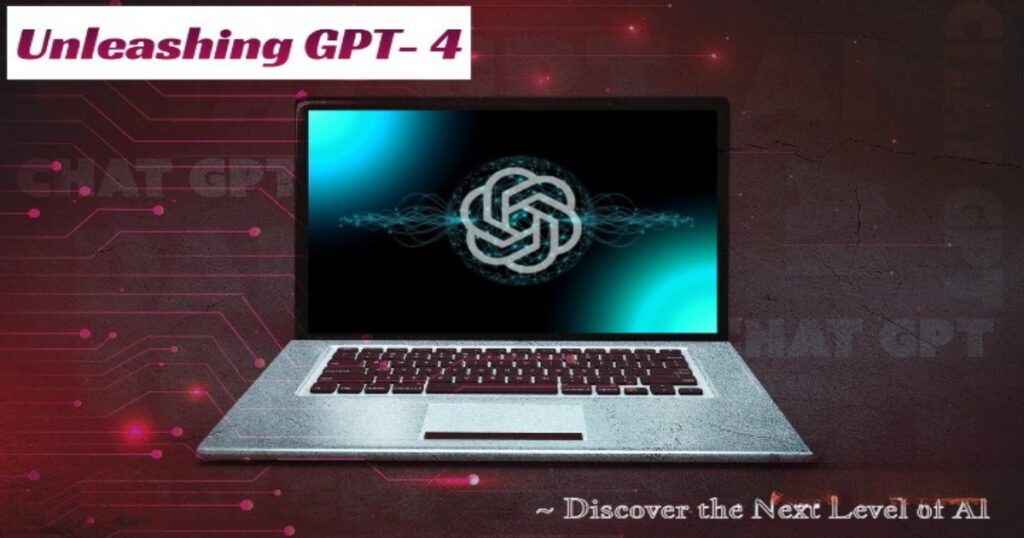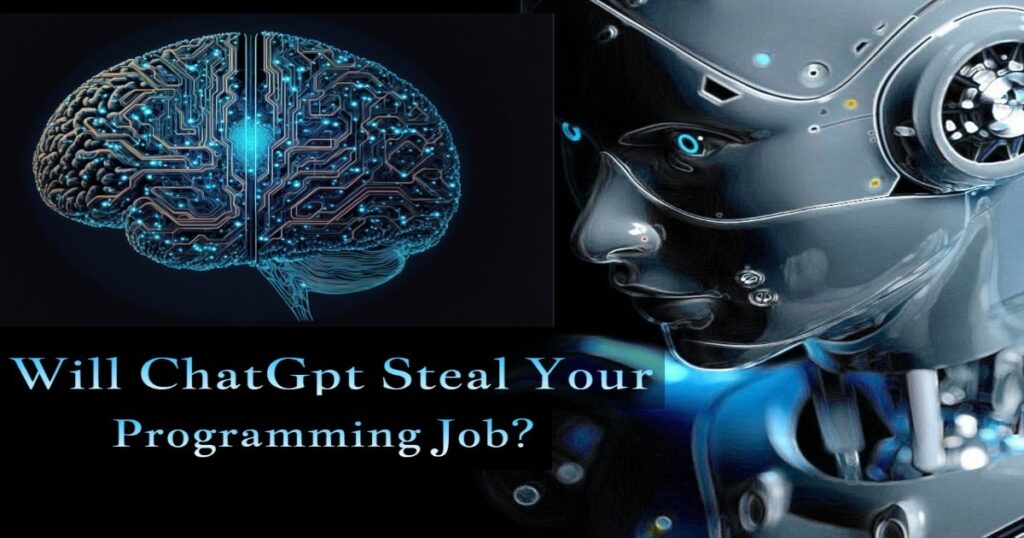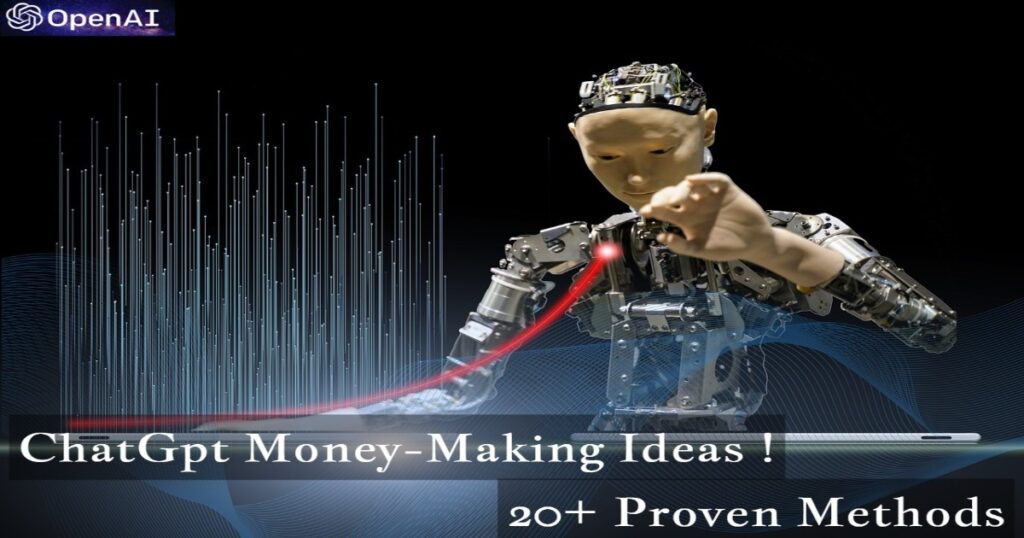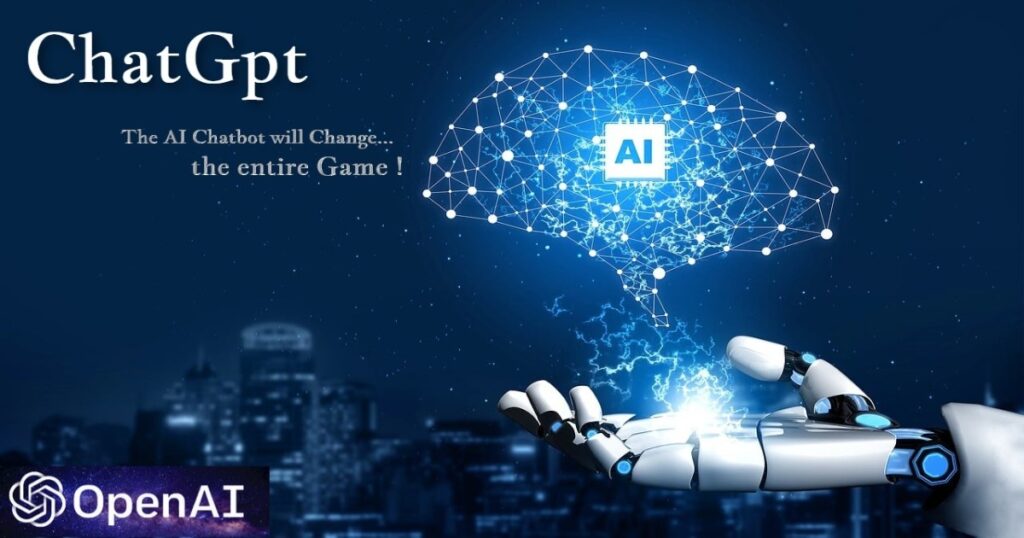GPT-4: The Most Powerful AI-Language Model Yet: The field of Artificial Intelligence (AI) has come a long way since its inception. One of the most exciting recent developments has been the rise of AI language models, which have revolutionized natural language processing (NLP) and text generation. And at the forefront of this revolution is the Generative Pre-trained Transformer (GPT) model, which has gained widespread attention and acclaim for its remarkable capabilities.
From language translation and sentiment analysis to chatbots and content creation, GPT and other AI language models have opened up a world of possibilities for businesses and individuals alike.
But what exactly are these models, and how do they work?
In this article, we’ll take a closer look at the GPT-4 model and explore its impact on the AI and NLP landscape.
So, whether you’re a marketer looking to create compelling content, a customer service representative seeking to automate responses, or a researcher exploring the frontiers of AI, understanding the GPT and AI language model revolution is crucial. Let’s dive in and see what all the fuss is about.
Latest Announcement:
In the middle of the March, OpenAI, the renowned AI powerhouse, revealed its next major update to the technology that powers ChatGPT and Microsoft Bing, which is called GPT-4.
According to the company, GPT-4 is bigger, faster, and more accurate than ChatGPT, which can even pass several top exams with flying colors, such as the Uniform Bar Exam for aspiring lawyers in the US.
In the company’s announcement blog, OpenAI highlights the new language model’s enhanced abilities, stating that it is now more creative and collaborative than ever before. Unlike the previous version, ChatGPT powered by GPT-3.5, GPT-4 can not only accept text inputs, but it can also use images to generate captions and analyses.
However, that’s just the beginning. In this article, we’ll delve into what the new language model is, what it isn’t, and how it surpasses its predecessor.
What Exactly Is GPT-4?
On March 14, 2023, OpenAI released its latest AI language model, the Generative Pre-trained Transformer 4 (GPT-4), which is the fourth iteration in the GPT series. Unlike its predecessors, GPT-4 is a multimodal model that can take both text and images as input. It was trained using public data and data licensed from third-party providers to predict the next token and then fine-tuned with reinforcement learning from both human and AI feedback for human alignment and policy compliance.
Currently, GPT-4 is only available in a limited form via ChatGPT Plus, and access to its commercial API is provided via a waitlist. Despite this, observers have reported that the GPT-4-based version of ChatGPT is a significant improvement on its predecessor, GPT-3.5-based ChatGPT, though it still retains some of the same problems. OpenAI has not disclosed the technical details of GPT-4, including its size, which has left many eager to learn more about this impressive new language model.
The release of GPT-4 represents a major step forward in the field of AI language models, and its multimodal capabilities and advanced training methods hold great promise for a wide range of applications, including content creation, translation, and customer service. As GPT-4 continues to be refined and developed, it will undoubtedly play a significant role in shaping the future of natural language processing and AI as a whole.
How Can You Access GPT-4?
The next iteration of the Generative Pre-trained Transformer (GPT) model, GPT-4, is set to have some exciting new features. Notably, it will be able to process both text and image inputs, though only the text-input feature will be available to ChatGPT Plus subscribers and software developers who join the waitlist. The image-input feature will not be publicly available yet.
- ChatGPT Plus is a subscription plan that offers faster response times and priority access to new features and improvements for $20 per month.
- GPT-4 is already powering Microsoft’s Bing AI chatbot and some features on Duolingo’s subscription tier.
- For developers who want to build applications and services using GPT-4, it will be available as an API.
- Some companies, including Duolingo, Be My Eyes, Stripe, and Khan Academy, have already integrated GPT-4 into their offerings.
The first public demonstration of GPT-4 was recently live-streamed on YouTube, showcasing some of its new capabilities. It’s clear that GPT-4 is poised to bring significant improvements to the AI and natural language processing landscape, and we can expect to see it being integrated into more products and services in the future.
How To Use GPT-4?
If you want to try out GPT-4, the easiest way is to use Bing Chat, a free tool that Microsoft has integrated with the new language model.
While some of GPT-4’s features are not available in Bing Chat, such as visual input, the tool still offers access to the expanded LLM and its advanced intelligence capabilities. Keep in mind that Bing Chat has its limitations, allowing only 15 chats per session and 150 sessions per day.
Alternatively, you can upgrade to ChatGPT Plus for $20, which grants access to GPT-4 and other versions of the LLM.
After entering your credit card information, you can switch between GPT-4 and older models by looking for the black logo instead of the green logo. Using GPT-4 is similar to ChatGPT Plus with GPT-3.5, but it is more capable and offers features such as dataset fine-tuning for tailored results.
Editor’s Choice:
- ChatGpt: The AI Chatbot Taking World by Storm
- 25 Creative Ways to Make Money Online Using ChatGpt
- Will ChatGpt Replace Programmers in the Future?
Accessing GPT-4 offers exciting possibilities for individuals and businesses alike, providing improved natural language processing and text generation capabilities. Whether you are creating marketing content, developing chatbots, or conducting research, GPT-4 is an invaluable tool that can help you achieve your goals.
So why not give it a try and see what it can do for you?
Capabilities: GPT-4 Vs GPT-3.5?
1. Enhanced Visual Processing: GPT-4 is a major upgrade from its predecessor, GPT-3, as it has become multimodal, meaning it can understand more than just text. It can now process and analyze images and provide information accordingly.
While Google Lens can search for information related to an image, GPT-4 can understand the image and even explain its contents, as demonstrated by an example provided by OpenAI.
2. Improved Security: GPT-4 is less prone to generating misinformation or going off track, thanks to OpenAI’s six-month training program. It has improved in terms of factuality and steer ability and is less likely to produce undesirable outputs.
3. Increased Processing Power: Large Language Models (LLMs) have the capability to process massive amounts of data, as they have been trained on billions of parameters. However, even with this vast amount of training, there are still limitations to how much information they can handle during a conversation.
For example, ChatGPT’s GPT-3.5 model can manage around 8,000 words or 4,096 tokens, beyond which it may start to lose track.
However, GPT-4 has made significant advancements in this regard and can now process up to 64,000 words or 32,768 tokens in a single conversation or document. This increase in processing capability means that GPT-4 can maintain the integrity of lengthy conversations and generate long-form content with much greater ease than its predecessor, GPT-3.5.
These enhancements in GPT-4’s capabilities make it a significant leap forward in the evolution of AI language models and pave the way for even more advanced models in the future.
.
4. Higher Accuracy: Although GPT-4 is not fully reliable; it has significantly reduced hallucinations relative to previous models and has shown a 40 percent improvement in factuality evaluations. It is now more difficult to trick GPT-4 into producing hate speech or misinformation.
5. Better Multilingual Support: Most of the data used to train machine learning models is in English, and the vast majority of information available on the internet is also in English. This presents a significant challenge when attempting to train Language Learning Models (LLMs) in languages other than English.
However, the upcoming GPT-4 model appears to be more adept at handling multiple languages, and OpenAI has demonstrated that it outperforms its predecessor, GPT-3.5, and other LLMs when answering thousands of multiple-choice questions in 26 different languages.

While GPT-4 still performs best in English with an accuracy rate of 85.5%, it also shows impressive accuracy rates for other languages, such as Telugu, at 71.4%.
This breakthrough means that users can look forward to using chatbots based on GPT-4 that can produce outputs with greater clarity and accuracy in their native languages. This will revolutionize the way people communicate, especially in areas with a diversity of languages, where GPT-4’s multilingual capabilities will be invaluable in facilitating communication across language barriers.

Overall, GPT-4 represents a significant improvement in AI language models, with its multimodal capabilities, improved accuracy, and ability to process more information. Its multilingual capabilities make it an even more valuable tool for businesses and individuals alike.
NOTE: The above two images are taken from their official website: openai.com
Limitations Of The GPT-4?
OpenAI’s GPT-4 language model, is expected to be more powerful than previous versions. However, there has been controversy over the lack of technical details provided by OpenAI in their report, including the model size, architecture, and training dataset. OpenAI cited the competitive landscape and safety implications as reasons for not providing more information.
Some have criticized this decision, while others defend it. Nonetheless, the release of GPT-4 is expected to have a significant impact on the development of AI language models.
- According to OpenAI, GPT-4 has limitations that make it “less capable than humans” in many real-world scenarios, and inaccurate responses or “hallucinations” remain a challenge for many AI programs, including GPT-4.
- Despite these limitations, OpenAI claims that GPT-4 can rival human propagandists in many domains, especially when working alongside a human editor.
- OpenAI cited an example where GPT-4 was able to generate plausible suggestions when asked how to get two parties to disagree with each other.
- OpenAI CEO Sam Altman has described GPT-4 as “most capable and aligned” with human values and intent, although he acknowledges that it is still flawed.
- One of GPT-4’s limitations is that it generally lacks knowledge of events that occurred after September 2021, which is when the vast majority of its training data was collected.
- GPT-4 also does not learn from experience in the same way that humans do, which can limit its ability to adapt to new situations.
In conclusion…
The rise of AI language models like GPT-4 has opened up exciting new possibilities for natural language processing and text generation. While these models have limitations and challenges that still need to be addressed, they offer significant potential benefits for businesses, researchers, and individuals.
As the field of AI continues to evolve, it will be interesting to see how language models like GPT-4 are further developed and applied in the years to come.
Where Is The GPT-4 Model Being Used Now?
The Generative Pretrained Transformer (GPT) language model has made significant strides in natural language processing (NLP) since its inception. The latest iteration of the model, GPT-4, promises to take language processing capabilities to new heights. But where is this revolutionary technology being used now?
Now, we’ll explore the current applications of GPT-4 and see how it is being employed in various industries, from education and healthcare to finance and media.
Let’s dive in and discover the exciting possibilities that GPT-4 brings to the table.
1. ChatGPT Plus: ChatGPT Plus is a subscription-based version of ChatGPT that utilizes the power of GPT-4. For a monthly fee of 20 USD, users can access the enhanced capabilities of the model. Additionally, a select group of applicants can use GPT-4 through the OpenAI GPT-4 API waitlist. After being accepted, users must pay a fee of 0.03 USD per 1000 tokens for the initial text provided to the model, and 0.06 USD per 1000 tokens that the model generates. The prices are doubled for the 32768-token version of the model.
2. Duolingo: Duolingo has incorporated GPT-4 into their language learning application through two new features: ‘Roleplay’ and ‘Explain My Answer.’ The initial version of the update is targeted toward English speakers learning French or Spanish, with plans to extend the features to other languages in the future.
3. Khan Academy: Khan Academy is one of the many organizations that have harnessed the power of GPT-4 to create innovative solutions. The organization has developed a tutoring chatbot called ‘Khanmigo’ using GPT-4 technology, which is currently in the research phase.
Although access to the chatbot is currently limited to students and teachers from 500 partner school districts, it has been made available to them free of charge. However, a small number of users have been selected from a waitlist to access the chatbot, and they are required to pay a $20 monthly fee to use the technology.
.
4. Miðeind ehf: OpenAI selected Icelandic start-up Miðeind ehf as one of six companies to participate in an early beta testing program of the new GPT-4 model. Miðeind ehf works on language preservation and will have the opportunity to explore the capabilities of the model in their field.
5. GitHub Copilot: GitHub Copilot has recently announced a new AI assistant called ‘Copilot X’, which is powered by GPT-4. This product provides a chat-style interface to GPT-4, allowing programmers to ask questions like ‘How do I vertically center a div?’ and receive relevant answers. With the ‘context-aware conversations’ feature, users can highlight a portion of their code and direct GPT-4 to perform specific actions on it, such as writing unit tests.
Another feature, called ‘code walkthroughs,’ allows GPT-4 to automatically generate summaries for pull requests submitted to GitHub. Copilot X also provides terminal integration, allowing users to generate shell commands based on natural language requests. Currently, the product is only available to a limited number of people selected from a waitlist, and the release date and cost of the product are yet to be announced.
.
6. Be My Eyes: Be My Eyes is an app that helps visually impaired individuals identify objects and navigate their surroundings. It has recently integrated GPT-4’s image recognition capabilities through a new ‘Virtual Volunteer’ feature, making it the first app to do so. This feature provides an alternative to relying on human volunteers for the same tasks. Currently, the Be My Eyes ‘Virtual Volunteer’ is in beta testing and is expected to be available to the public soon.
7. Microsoft Bing: Microsoft Bing has recently undergone a major overhaul, introducing a new chatbot feature based on OpenAI’s GPT-4. The new Bing Chat has already generated significant interest, with a million people joining its waitlist within just 48 hours. Currently, Bing Chat is only available for users of Microsoft Edge, and Microsoft has announced that waitlisted users who set Edge and Bing as their defaults and install the Bing mobile app will be prioritized.
However, when the new Bing was first demoed to journalists, it produced several hallucinations and was criticized for being more argumentative than ChatGPT. The chat interface also proved initially vulnerable to prompt injection attacks, with the bot revealing its hidden initial prompts and rules. Despite this, Microsoft has continued to refine the product, limiting the total number of chat turns to prevent confusion and restricting the model’s ability to express emotions.
.
8. Microsoft 365 Copilot: On 17 March 2023, Microsoft announced that it would be integrating GPT-4 into its products even further, with the introduction of Microsoft 365 Copilot. This new feature will be embedded in popular apps such as Word, Excel, PowerPoint, Outlook, Teams, and more, providing users with access to GPT-4’s advanced AI capabilities. Microsoft hopes that this integration will streamline everyday tasks and make them more efficient, ultimately improving productivity for millions of users.
The integration of GPT-4 into these applications showcases the model’s potential to revolutionize the way we interact with technology. As more organizations incorporate GPT-4 into their products and services, it is expected to become even more ubiquitous in our daily lives, transforming the way we learn, work, and communicate.
It is a thrilling prospect, and we can only wait and see how this technology continues to evolve in the coming years.
Frequently Asked Questions about GPT-4
1. Who Owns GPT-4?
Gpt-4 (Generative Pre-trained Transformer-4) is an AI language model owned by OpenAI. It was launched in March 2023.
OpenAI was founded in San Francisco, in late 2015 by a group of entrepreneurs, researchers, and philanthropists, including Elon Musk, Sam Altman, and Greg Brockman.
2. Does GPT-4 Exist?
OpenAI has recently launched the fourth iteration of its GPT series – the Generative Pre-trained Transformer 4, or GPT-4 for short. This is a powerful, multimodal language model that has been designed to process and generate natural language on a massive scale. While the model was officially released on March 14, 2023, it is currently only available to the public in a limited form via ChatGPT Plus.
However, businesses and developers can still access GPT-4’s commercial API by joining a waitlist.
3. Will GPT-4 Be Free?
GPT-4, the latest version of the GPT language model, is now available for use on Microsoft Bing Chat. While it’s exciting news for those looking to take advantage of this cutting-edge technology, there is a catch: GPT-4 is not accessible to free users. Only those with a ChatGPT Plus account will be able to access the full capabilities of GPT-4 on Bing Chat.
So, if you’re looking to leverage the power of GPT-4 on Bing Chat, it’s worth considering upgrading to a ChatGPT Plus account. With access to this cutting-edge technology, you can stay ahead of the curve and unlock new possibilities in natural language processing and AI.
4. How Is GPT-4 Trained?
GPT-4, like its earlier versions, underwent extensive training using massive amounts of data. This process involved feeding the model with huge volumes of text, which it then analyzed and learned from. However, this initial training was not sufficient to make the model fully accurate and effective in its language processing abilities. To fine-tune its performance, human testers were brought in to evaluate and refine the model’s output.
This human-in-the-loop approach helped to eliminate errors and improve the overall fluency and coherence of the model’s generated text. The combination of data-driven training and human refinement has resulted in GPT-4’s impressive capabilities and made it a leading player in the field of AI language models.
5. How Many Parameters Will GPT-4 Have?
GPT-1 had 117 million parameters, while GPT-2 had 1.5 billion. In February 2021, the latest iteration of the GPT model, GPT-3, was released, featuring a staggering 175 billion parameters. This increase in the number of parameters has allowed GPT-3 to generate more human-like and coherent text than its predecessors.
Furthermore, there have been rumours and speculations that OpenAI, the creators of the GPT model, are already working on GPT-4, which is expected to have over 100 trillion parameters. If these rumors turn out to be true, GPT-4 will undoubtedly be a game-changer, significantly advancing the capabilities of AI language models.
6. What Is ChatGPT-4?
ChatGPT-4 is the latest GPT model announced by the OpenAI. It was released on March 14, 2023. To ensure its effectiveness, ChatGPT has undergone fine-tuning using both supervised and reinforcement learning techniques. This has allowed it to learn and adapt to a wide range of scenarios, making it a versatile and powerful tool for anyone seeking to interact with an AI chatbot.
7. When ChatGPT-4 Will Be Released?
On March 14, 2023, OpenAI released their latest GPT model, called ChatGPT-4. Currently, the model is available to the public in a limited form through ChatGPT Plus, while the commercial API access is provided through a waitlist.
8. Can GPT-4 Replace Google?
Answering this question directly is a bit complicated because there are distinct differences between ChatGPT and Google. ChatGPT is a language model developed by OpenAI that is capable of answering questions and providing information. On the other hand, Google is a technology company that offers a broad range of products and services, including its search engine.
Despite their differences, both ChatGPT and Google play important roles in helping people find information and gain knowledge. However, it’s essential to note that while ChatGPT can provide answers, it’s not intended to replace Google or its services.
9. How Much Better is GPT-4 Than GPT-3.5?
The latest version of the Generative Pre-trained Transformer (GPT) model, GPT-4, represents a significant advancement over its predecessor, GPT-3.5, and is 10 times more advanced than its predecessor (According to the news). This enhanced version is capable of better contextual understanding and nuanced distinctions, leading to more precise and coherent responses.
With this improvement, GPT-4 has demonstrated superior performance in natural language processing tasks, making it a promising development in the field of AI language models.
10. Can ChatGPT-4 Write Code By Itself?
One of the key things to know about ChatGPT-4 is its ability to generate useful code. By analyzing pre-existing code and applying its own logic, this AI language model can provide users with better results than its predecessors.
In other words, ChatGPT-4 is capable of analyzing and processing pre-written code, which enables it to generate code that is optimized, efficient, and effective. This groundbreaking feature makes ChatGPT-4 an invaluable tool for developers, programmers, and other professionals seeking to improve their coding abilities and productivity.
11. Will GPT-4 Replace Programmers?
While the Generative Pre-trained Transformer (GPT) model has made significant strides in generating functional code, it still cannot replace the creativity and problem-solving abilities of human programmers. Although GPT-4 can generate code, it requires the expertise of a human programmer to inspect and analyze the code, ensuring it works as intended. Additionally, programming encompasses more than just coding, and it involves design, testing, and debugging, which GPT-4 cannot yet accomplish.
However, the rise of AI and the GPT-4 model has made programming accessible to those who are not experts in the field. GPT-4 can replace a programmer who is unaware of the AI revolution and does not know how to leverage these AI tools.
With its advanced capabilities, GPT-4 can assist novice programmers in generating code, offering suggestions and automating certain processes, ultimately enhancing their productivity and efficiency.
Conclusion:
In conclusion, the rise of the GPT and AI language model revolution has transformed the world of natural language processing and text generation.
As the field of AI continues to evolve and expand, it is clear that GPT and other language models will play an increasingly vital role in our lives. Whether you’re a marketer looking to create compelling content, a researcher exploring the frontiers of AI, or simply someone fascinated by the possibilities of this technology, the GPT and AI language model revolution is one to watch.
So why not join the conversation and explore the endless possibilities of AI and natural language processing today?
If you’re interested in the latest developments in artificial intelligence and natural language processing, hopefully, this article will provide enough information on ‘GPT-4: The Most Powerful AI-Language Model Yet’, which helps you to know about the GPT-4 model in detail. In this article, we’ll provide you with a detailed overview of the GPT-4 model, its capabilities, and potential applications.
If you have any questions or comments, feel free to leave them in the comment section below. Our team will do our best to respond to your queries as quickly as possible. Don’t forget to share this informative article with your friends who may also be interested in this exciting topic.
THANK YOU For Reading! Will Visit Again, My Friend 🙂






